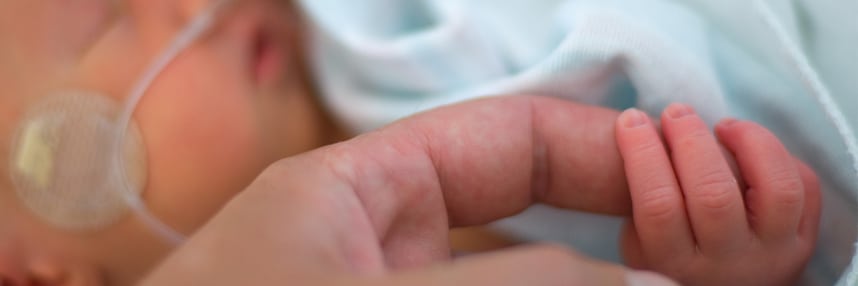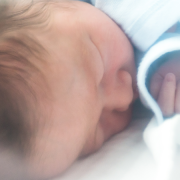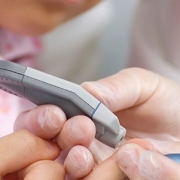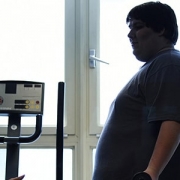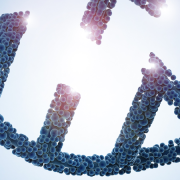NICE approves new SMA gene therapy
NHS England has made a deal on a new, life-saving treatment for the most severe form of the condition
A new single-dose gene replacement therapy for spinal muscular atrophy (SMA) has made headlines after being approved by NICE this month.
The treatment, which delivers a new, functional copy of a gene to the patient, could save the lives of around 80 babies per year who would otherwise die before the age of two from the most severe form of the condition.
A life-threatening condition
SMA is a rare condition caused by a genetic variant in the SMN1 gene on chromosome 5. It affects the motor neurones in the spinal cord, resulting in loss of function in the muscles used for movement and, in severe forms of the condition, those used for breathing and swallowing.
90% of babies affected by the most severe form of the condition, SMA type 1, do not typically survive beyond the age of two.
“Spinal muscular atrophy is the leading genetic cause of death among babies and young children, which is why NHS England has moved mountains to make this treatment available,” said Simon Stevens, chief executive of NHS England.
On average, 65 babies born each year in England are diagnosed with SMA, and 60% of those cases are type 1. Other types of SMA do not typically cause death in infancy, although some can still cause significant disability.
Current treatments: the limitations
The only current treatment for SMA is nusinersen, an antisense therapy approved by NICE for people with type 1, 2 or 3 SMA, or those with a pre-symptomatic form of the condition.
SMA is caused when a person does not have a working copy of a gene called SMN1, which is responsible for producing SMN: a protein that is required for nerve cells to function. There is a ‘back-up’ gene called SMN2 that also produces this protein, but it does not produce enough of it to compensate.
Nusinersen works by targeting the SMN2 gene, allowing for more functional protein to be made. It is an effective treatment that can slow or halt disease progression, but it needs to be given to the patient every four months.
New therapy, big breakthrough
Onasemnogene abeparvovec (trade name: Zolgensma) uses a harmless virus to package a working copy of the SMN1 gene and deliver it into the patient’s cells. It is administered in a single intravenous infusion, and does not require further doses. The mechanism is very similar to another treatment that was approved for use in the NHS in 2019 called voretigene neparvovec (trade name: Luxterna): a treatment for Leber congenital amaurosis, an inherited retinal condition that leads to visual degeneration and blindness.
These types of treatments come with a cost, but NHS England have confirmed a deal for Zolgensma for a reduced price “that is fair to taxpayers”.
The NICE committee considered evidence from clinical trials, and determined that the treatment could “allow babies to gain important motor milestones such as independent sitting and walking, but for some babies who are diagnosed before they have symptoms, it might come close to being a cure… allowing the lives of babies who might otherwise have died before their second birthday to be transformed.”
“Spinal muscular atrophy is a very serious, debilitating and distressing condition that has very significant effects on every aspect of life of those with SMA, and their families and carers,” said Meindert Boysen, deputy chief executive of NICE. “Being able to support access to one of the most exciting recent innovations in life sciences, a one-off therapy designed to address the genetic root cause of SMA, is both humbling and rewarding.”
The draft guidance is open for public consultation until 6 April.
–
Please note: This article is for informational or educational purposes, and does not substitute professional medical advice.


